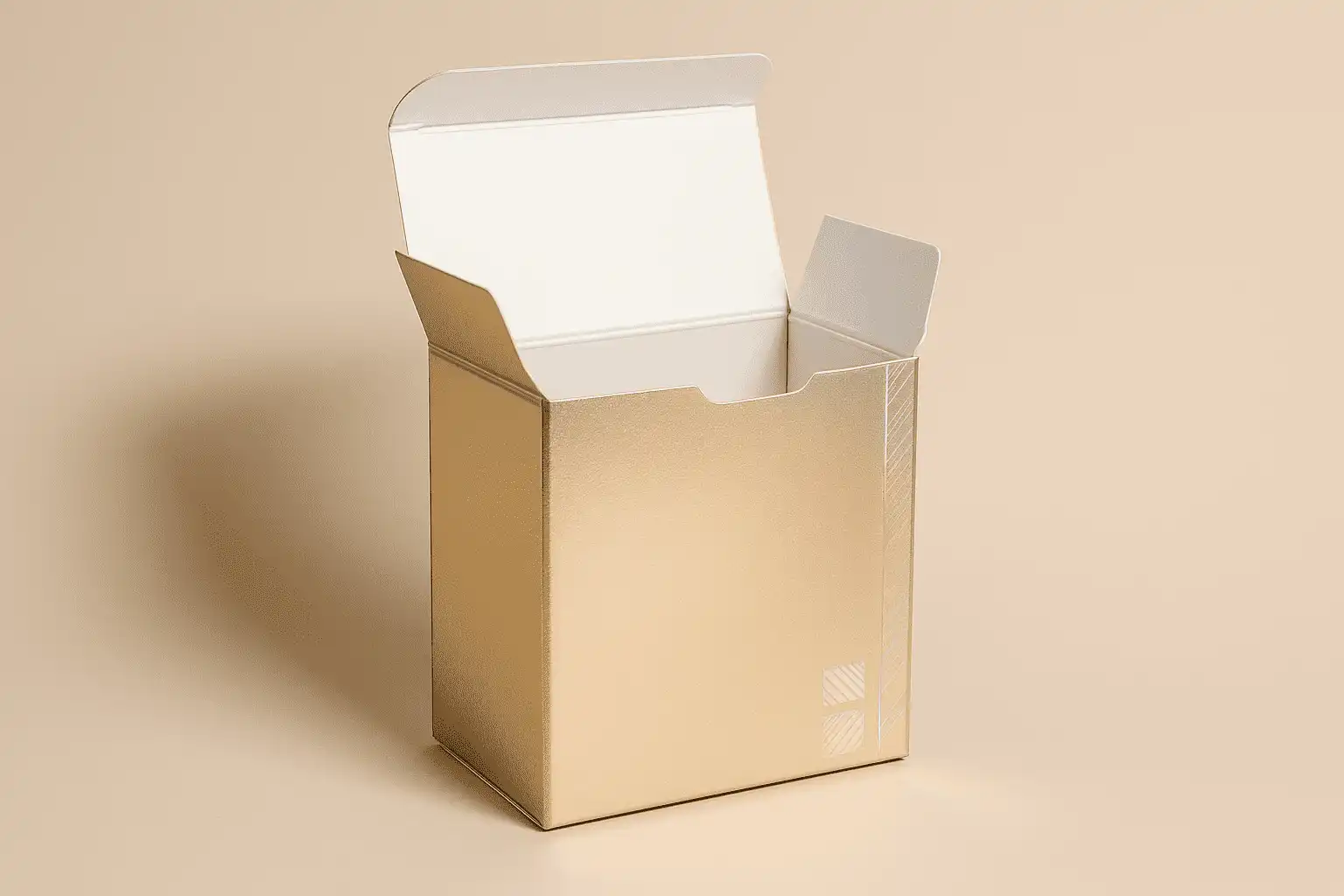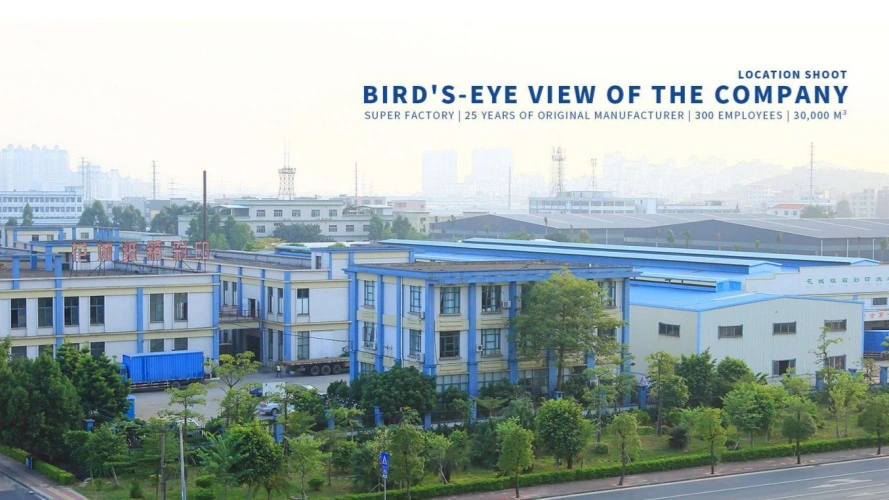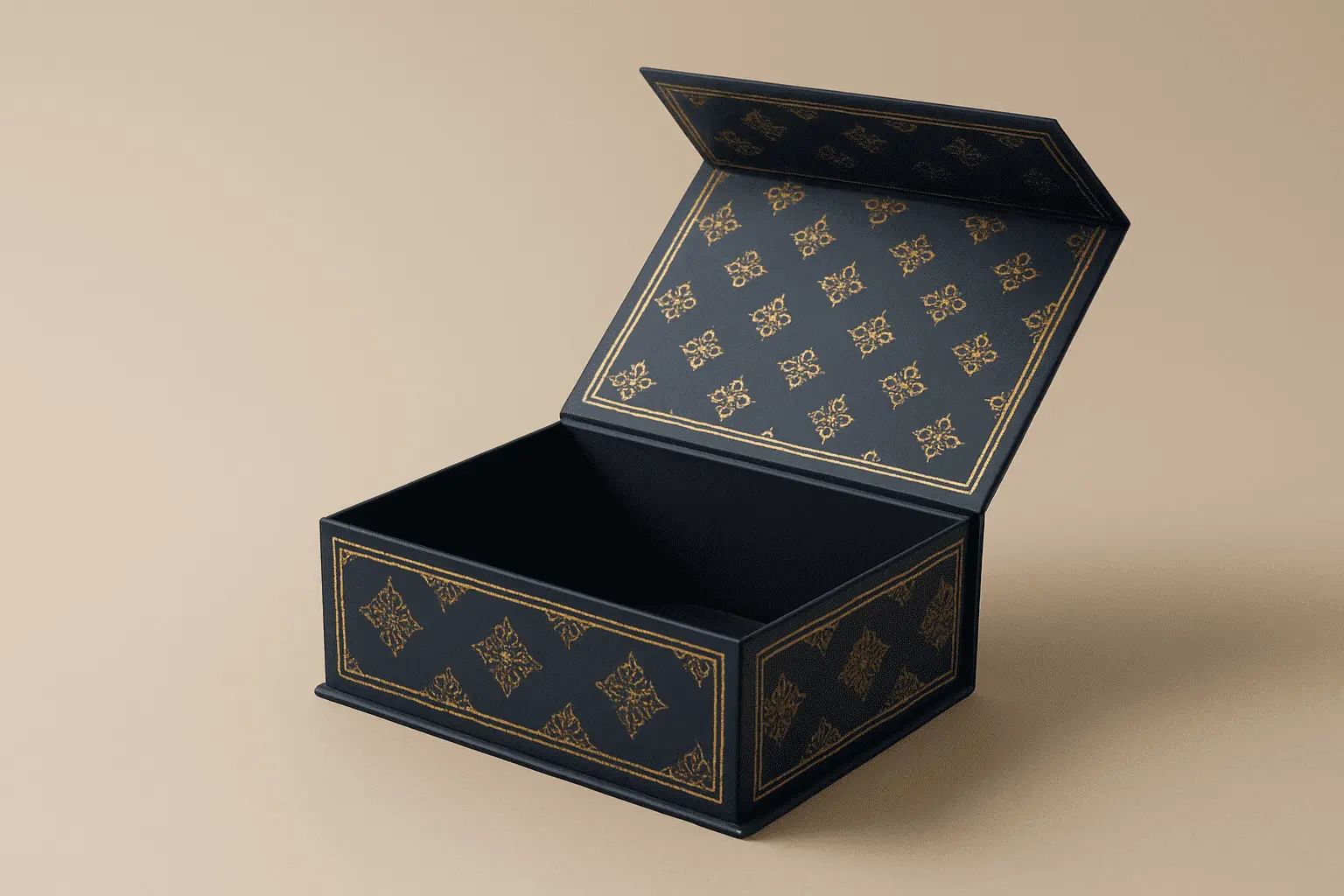Best Metallic Paper Boxes for Cosmetic and Candle Brands
Picture this: your luxury skincare serum sits on a retail shelf, surrounded by dozens of competitors in plain packaging. Within three seconds, shoppers decide whether to reach for your product or walk past. This is where metallic paper box packaging transforms browsers into buyers. The shimmer of gold foil catches the eye, the substantial weight communicates quality, and the smooth texture invites touch. For cosmetic and candle brands competing in saturated markets, metallic paper boxes aren't just containers—they're silent salespeople that elevate perceived value, strengthen brand recognition, and justify premium pricing while protecting delicate products throughout their journey from factory to vanity table.

Why Metallic Paper Boxes Dominate Premium Cosmetic Packaging?
The cosmetic industry has witnessed a fundamental shift in packaging expectations over the past decade. Consumers no longer view packaging as merely functional—they expect an unboxing experience that matches the quality of the product inside. Metallic paper box solutions address this demand by combining visual drama with practical protection. When a customer picks up a cosmetic item housed in a metallic paper box featuring hot foil stamping in rose gold or silver, they immediately associate the product with luxury and quality. This psychological trigger operates at a subconscious level, influencing purchasing decisions before ingredients or price points enter consideration. The versatility of metallic paper box designs allows brands to differentiate themselves in crowded marketplaces. Unlike plastic or generic cardboard, metallic paper boxes can be customized with various paperboard weights ranging from 250gsm to 400gsm, each selected based on product weight and desired structural integrity. Surface treatments like cold foil stamping, UV coating, frosted touch finishes, and embossing create tactile experiences that photographs cannot capture, compelling in-store examination. These sophisticated finishing techniques transform standard packaging into memorable brand touchpoints that customers photograph and share on social media, generating organic marketing reach that extends far beyond initial purchase moments.
-
Material Excellence in Metallic Paper Box Construction
Selecting appropriate substrate materials represents the foundation of successful metallic paper box manufacturing. SBS C1S paperboard stands as the industry standard for premium cosmetic packaging, offering a brilliant white printing surface on one side while maintaining functional versatility on the reverse. This coated-one-side configuration provides exceptional printability for vibrant color reproduction and supports specialty finishes like metallic foil applications. The virgin bleached wood pulp composition ensures consistency in color and structural performance, critical factors when maintaining brand standards across production runs. The high stiffness characteristics of SBS C1S make it particularly suitable for rigid metallic paper box structures that must protect glass bottles, delicate applicators, and fragile cosmetic formulations during shipping and retail display. For brands requiring dual-sided visual appeal, SBS C2S paperboard delivers coating on both surfaces, enabling interior printing that extends the unboxing experience beyond external aesthetics. This material choice proves especially valuable for metallic paper boxes with lid-and-base constructions where interior surfaces remain visible when opened. The high brightness and whiteness of SBS C2S enhance color contrast, making metallic foils appear more vibrant and creating stronger visual impact. The hygienic properties of virgin bleached pulp construction make these substrates suitable for direct contact with cosmetic products, addressing regulatory requirements while maintaining structural integrity. Many cosmetic brands specify FSC-certified SBS materials, aligning their metallic paper box packaging with environmental sustainability commitments that resonate with eco-conscious consumers.
Brown Kraft paperboard represents an alternative substrate gaining traction among organic and natural cosmetic brands. While lacking the bright white canvas of bleached materials, the natural brown hue creates authenticity and earthiness that aligns with clean beauty positioning. When combined with metallic foil applications, Brown Kraft substrates create striking contrast—imagine natural brown paperboard with copper or bronze foil accents. This material choice communicates environmental responsibility through its unbleached composition while maintaining the tear resistance and tensile strength required for protective packaging. The slightly coarse surface texture provides authentic tactile feedback that plastic packaging cannot replicate, supporting brand narratives centered on natural ingredients and sustainable practices.
-
Printing Technologies That Bring Metallic Paper Boxes to Life
CMYK offset printing forms the backbone of most metallic paper box production, delivering photo-quality reproduction across the full visible spectrum through cyan, magenta, yellow, and black ink overlays. This cost-efficient and technically mature process excels at reproducing smooth color gradients, detailed product photography, and complex graphic elements that communicate brand identity. The universal adoption of CMYK printing across commercial presses ensures production scalability and competitive pricing, particularly important for established cosmetic brands managing high-volume product launches. When combined with metallic substrates or foil stamping, CMYK printing creates layered visual effects where conventional colors interact with reflective elements to produce depth and dimensionality impossible with single-layer printing approaches. Pantone spot color printing addresses the critical need for exact brand color matching across production runs and multiple manufacturing facilities. The Pantone Matching System provides standardized ink formulas identified by unique codes, ensuring that signature brand colors remain consistent regardless of when or where metallic paper boxes are produced. This precision becomes particularly important for cosmetic brands where packaging color must match product formulations—imagine lipstick boxes where exterior packaging exactly reflects the shade inside. Pantone metallic inks extend color possibilities beyond conventional palettes, offering thousands of specialty hues including fluorescents and metallics that create unique brand identities. These spot colors deliver solid, dot-free coverage in single passes, producing cleaner edges and sharper details than CMYK screen patterns can achieve on metallic paper box surfaces.
Specialized Surface Finishes for Candle Packaging Excellence
Candle brands face unique packaging challenges that metallic paper boxes address through specialized surface treatments and structural designs. Unlike cosmetic products protected by internal bottles or compacts, candles require packaging that manages temperature sensitivity, prevents wax damage, and showcases product aesthetics through strategic windows or openings. Metallic paper box solutions for candles often incorporate UV coating applications that provide glossy protective layers while enhancing the visual impact of printed graphics. These coatings protect against fingerprints and handling marks during retail display while adding depth to metallic foil elements that catch ambient light, creating dynamic visual presentations that draw customer attention across store aisles. Embossing techniques add dimensional interest to candle packaging, creating raised patterns or brand logos that customers can feel before purchasing. This tactile engagement proves particularly effective for premium candle brands competing in gift markets, where packaging quality directly influences perceived value. Debossing creates inverse effects through recessed impressions that add sophistication and subtlety, often combined with foil stamping within debossed areas to create rich, layered visual effects. When applied to metallic paper box structures, these dimensional treatments transform flat surfaces into sculptural forms that communicate craftsmanship and attention to detail. The interplay between raised metallic elements and recessed shadows creates visual interest from multiple viewing angles, essential for products displayed in varied retail lighting conditions.
-
Structural Innovation in Metallic Paper Box Design
The evolution of die-cutting technology has expanded structural possibilities for metallic paper boxes far beyond simple rectangular forms. Custom metal dies create precise shapes, decorative windows, and intricate edge details that differentiate premium packaging from mass-market alternatives. For cosmetic applications, window cut-outs allow product visibility while maintaining protective enclosure, addressing consumer desires to see actual product colors before purchase. These structural elements require careful engineering to maintain box integrity—window sizes must balance visibility with structural strength, particularly when metallic foil applications add visual weight to surrounding areas. Precise die-cutting ensures clean edges and accurate fold lines that facilitate efficient assembly while creating professional finished appearances. Magnetic closure systems represent premium structural features increasingly specified for luxury metallic paper boxes. These closures provide satisfying tactile feedback when boxes snap shut, creating memorable unboxing moments that customers associate with quality and luxury. The engineering behind magnetic closures requires precise planning during the design phase—magnets must be positioned accurately within box structures to ensure proper alignment while accounting for paperboard thickness and coating layers. When integrated into metallic paper box designs for cosmetics or candles, magnetic closures eliminate the need for adhesive tabs or tuck closures that can appear less refined, supporting premium brand positioning through every interaction detail.
Production Excellence Through Advanced Manufacturing Processes
Professional metallic paper box production follows systematic workflows that transform design concepts into finished packaging through multiple specialized stages. The printing phase transfers artwork onto selected paperboard substrates using offset, digital, or flexographic presses calibrated for precise color reproduction and registration. Surface finishing immediately follows printing, applying protective coatings or decorative varnishes that enhance durability and visual appeal. UV coatings cure instantly under ultraviolet light, allowing rapid production throughput while creating high-gloss surfaces that amplify metallic effects. Matte finishes provide sophisticated alternatives for brands seeking understated elegance, creating smooth surfaces that reduce glare while maintaining protective properties. Lamination or mounting processes bond printed sheets to sturdier substrates or apply clear protective films that enhance durability against moisture, scratches, and handling damage. For metallic paper boxes destined for humid retail environments or international shipping, lamination provides essential protection that extends packaging lifespan and maintains visual quality. Die-cutting follows lamination, using custom metal dies to cut precise shapes, create strategic windows, and trim edges with accuracy impossible through manual methods. The precision of modern die-cutting equipment ensures consistent results across production runs, critical for maintaining brand standards when manufacturing thousands of metallic paper boxes.
-
Assembly and Quality Control in Metallic Paper Box Manufacturing
Gluing and assembly stages transform flat die-cut sheets into three-dimensional metallic paper box structures through precisely positioned adhesive applications and strategic folding sequences. Automated gluing equipment applies consistent adhesive amounts at exact locations, ensuring structural integrity while minimizing excess that could compromise appearance or interfere with closures. Assembly processes vary based on box styles—straight tuck end designs require different folding sequences than hinged-lid structures or drawer-style boxes. Quality control checkpoints throughout assembly identify defects before boxes progress to packing stages, maintaining the quality standards that premium cosmetic and candle brands require for protecting brand reputations. Packing and shipping represent the final production stages where finished metallic paper boxes are stacked, bundled, or cartoned for protection during transit. Professional manufacturers utilize protective materials and strategic stacking patterns that prevent damage during handling and transportation. Palletization organizes bundled boxes for efficient loading and unloading, reducing handling time and associated damage risks. For international shipments, additional protective measures may include moisture barriers, corner protectors, and secure strapping that maintains packaging integrity across extended transit periods and varied environmental conditions. These final production stages ensure that metallic paper boxes arrive at brand facilities or fulfillment centers in pristine condition, ready for product filling and distribution to retail channels.
Sustainable Practices in Modern Metallic Paper Box Production
Environmental consciousness has transformed packaging specifications across cosmetic and candle industries, with brands increasingly prioritizing sustainable materials and production methods. FSC certification provides third-party verification that paperboard materials originate from responsibly managed forests where harvesting practices support long-term ecological health. Metallic paper boxes manufactured with FSC-certified substrates allow brands to communicate environmental commitments through recognized certification marks that resonate with eco-conscious consumers. This certification extends beyond raw materials to encompass entire supply chains, ensuring that environmental standards are maintained from forest to finished packaging. Recyclability represents another critical sustainability consideration for metallic paper box specifications. Unlike plastic packaging that poses recycling challenges and environmental persistence concerns, paper-based packaging integrates smoothly into established recycling infrastructures. The recyclable nature of paperboard substrates means that metallic paper boxes can be processed through standard paper recycling streams, reducing landfill contributions and supporting circular economy principles. Brands that specify recyclable materials demonstrate environmental responsibility while meeting regulatory requirements in markets with extended producer responsibility legislation. This commitment to recyclability strengthens brand reputations among environmentally conscious consumers who increasingly evaluate products based on lifecycle environmental impacts.
Strategic Ordering Process for Custom Metallic Paper Boxes
Successful metallic paper box procurement begins with comprehensive demand consultation where brands communicate specific requirements, quantities, timeline expectations, and budget parameters. Professional manufacturers provide detailed questionnaires that capture essential specifications including dimensions, material preferences, finishing requirements, and structural features. This initial consultation phase establishes realistic expectations regarding production capabilities, lead times, and pricing structures. Experienced manufacturers ask probing questions that uncover unstated requirements—for example, clarifying whether boxes will be hand-filled or machine-filled, as this impacts structural tolerances and assembly specifications. Solution design follows initial consultation, with business managers conducting detailed content alignment to ensure manufacturing capabilities match brand requirements. This phase includes material recommendations based on product characteristics and usage scenarios. For lightweight cosmetic products, 250gsm paperboard may provide adequate protection, while heavier candles require 350gsm or 400gsm substrates for structural integrity. Surface process recommendations balance aesthetic goals with budget constraints—perhaps achieving similar visual impact through strategic spot UV applications rather than full-surface metallization. Professional manufacturers provide guidance based on extensive experience, helping brands optimize specifications for performance and cost-effectiveness.
-
Sample Approval and Production Implementation
Professional implementation proceeds through sample production that transforms approved designs into physical prototypes for evaluation and refinement. These samples allow brands to assess material quality, color accuracy, finishing effects, and structural performance before committing to full production runs. Sample evaluation should include handling tests that simulate retail conditions—opening and closing closures repeatedly, evaluating corner strength, and assessing how finishes respond to fingerprints and handling. Any concerns identified during sample evaluation can be addressed through specification adjustments before final approval, avoiding costly corrections after production begins. Order placement follows sample approval, with customers confirming specifications and providing deposit payments that authorize production commencement. Clear communication during this phase ensures all parties understand delivery timelines, shipping arrangements, and payment terms. Professional manufacturers provide production schedules that identify key milestones including printing completion, finishing application, assembly start, and estimated shipping dates. This transparency allows brands to coordinate packaging receipt with product filling operations, minimizing storage requirements and accelerating time-to-market for new product launches.
Conclusion
Metallic paper boxes represent strategic investments for cosmetic and candle brands seeking to elevate market positioning through packaging excellence that combines visual impact with functional protection. The sophisticated interplay of premium materials, specialized finishes, and structural innovation creates memorable brand experiences that justify premium pricing while supporting environmental sustainability.
Cooperate with GUANGZHOU FETCHING COLOR PRINTING & PACKAGING LTD.
Established in 1999 with over 25 years of specialized experience, GUANGZHOU FETCHING COLOR PRINTING & PACKAGING LTD. operates a 50,000 square meter manufacturing facility serving more than 1,000 loyal customers worldwide as a leading China metallic paper box factory, China metallic paper box supplier, China metallic paper box manufacturer, and China metallic paper box wholesale provider. Our advanced equipment including German Heidelberg XL162-6L printing machines, 15 fully automatic die-cut machines, and specialized manual department with 100 skilled craftsmen delivers High Quality metallic paper box solutions with competitive metallic paper box price and extensive metallic paper box for sale options. Certified under ISO9001-2015, ISO14001-2015, FSC, Disney, and G7 Color Management systems, we provide comprehensive packaging solutions spanning folding gift boxes, display racks, PDQs, mailer boxes, and specialized cosmetic packaging. Contact our experienced team at public@fetchingprinting.com to discuss your custom metallic paper box requirements and discover how our technical expertise and manufacturing capabilities transform your packaging vision into premium products that strengthen brand identity and drive market success.
References
1. Thompson, R. M. (2023). Sustainable Packaging Design: Materials and Methods for Premium Cosmetic Products. Journal of Packaging Technology and Research, 12(3), 145-162.
2. Chen, L., & Martinez, S. (2024). Consumer Perception and Brand Value: The Impact of Metallic Finishes in Luxury Packaging. International Journal of Marketing Studies, 16(1), 78-94.
3. Williams, K. A. (2023). Advanced Printing Technologies for High-End Cosmetic Box Manufacturing. Packaging Engineering Quarterly, 28(4), 201-218.
4. Anderson, P. J., & Roberts, D. L. (2024). Environmental Certifications and Sustainable Practices in Paper-Based Packaging Industries. Green Manufacturing Review, 11(2), 112-129.

Based on your location and order quantity, you will have the opportunity to receive a limited time free shipping promotion!

Corporate Purpose
